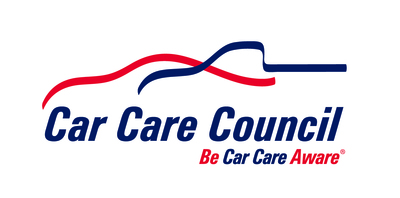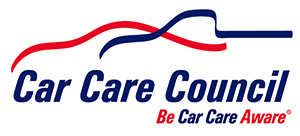BETHESDA, Md., Oct. 2, 2018 /PRNewswire/ -- Record rainfalls have hit parts of the country and flooding has taken its toll on vehicles. Thousands of cars, trucks and SUVs have been damaged by floods and the Car Care Council recommends that car owners in those areas check their vehicles for signs of water intrusion or contamination.

"Water damage from a flood can unknowingly cause problems that will be costly to fix down the road," said Rich White, executive director, Car Care Council. "In addition, flood damaged vehicles can be unhealthy to occupy because of mold and bacteria growing in the carpet and ventilation system."
The non-profit Car Care Council and the Car Care Professionals Network (CCPN), a network of professional automotive service providers, say it all comes down to how much water the vehicle took in and where the water reached in the vehicle. Together, the two organizations recommend taking the following steps to determine if a vehicle has been flood damaged:
- Take the sniff test. Close all the windows and doors and let the car sit for about five minutes then crack open a door and sniff. Mildew and mold have very distinctive smells and it doesn't take long for that smell to present itself.
- Try the touch test. Get some paper towels and press them against the low spots in the carpet. The paper towels will draw the moisture out and reveal if the carpet is wet under the surface. Some carpets can be several inches thick to insulate from heat and sound. If the paper towel becomes wet it could mean water has gotten into the car.
- Investigate the interior. Look under the seats and dash for corrosion and rust and look for exposed metal that is untreated. There are metal springs under the front seats that are usually not painted. If they are rusted that is a sign the interior has been wet. Look for mud and debris in places it does not belong.
- Inspect the instrument panel. Turn on the key and perform a bulb test. Make sure every bulb lights up. If a system has an issue, removing the warning bulb can hide it. Many times vehicles that have flooded have malfunctions in their anti-brake and air bag systems. Ensuring the light comes on and then goes out after the bulb test is an indicator that the system is on and has no active faults.
- Take it to a professional. Let a service and repair technician inspect your vehicle. They can raise the car and look underneath to see if there is any mud, sticks or rocks in the suspension. A professional can check the oil in the differentials to make sure they contain no water in them. Spend a few dollars to have it looked over to give you peace of mind.
The Car Care Council is the source of information for the "Be Car Care Aware" consumer education campaign promoting the benefits of regular vehicle care, maintenance and repair to consumers. For the latest car care news, visit the council's online media room at http://media.carcare.org. To order a free copy of the popular Car Care Guide, visit the council's consumer education website at www.carcare.org.
SOURCE Car Care Council

